2010 Porsche Panamera Turbo: First Drive

With Porsche’s new four door Panamera, the German sports car maker is trying to appeal, at least in part, to your sensible side. It’s inherent practicality, with four doors, four seats and a hatchback style trunk with a reasonable amount of cargo room, making the Panamera much easier to convince yourself into over one of Porsche’s many two-seater sports cars.
FAST FACTS
| 1. With a twin-turbo 4.8-liter direct-injection V8 engine, AWD and a 7-speed PDK gearbox, the Panamera Turbo can hit 60 mph in just 4.0 seconds. |
| 2. A Sports Chrono package drops that time to 3.8 seconds – just 0.3 seconds off that of a 911 Turbo. |
| 3. The Panamera Turbo is priced from $132,600 ($155,000 CAD). |
| 4. Porsche also sells the Panamera S and all-wheel drive 4S models with 400-hp V8 engines, while an entry-level V6 option is expected. |
While Porsches have always been about what you want, the Panamera adds a bit more of what you need.
And then they went and built the Turbo model.
A V8 ENGINE, TWIN TURBOS AND 500 HORSEPOWER
Having just completed out test already impressively powerful 400 horsepower Panamera S, we just had to grab a Turbo model for a short stint.
With the same 4.8-liter V8 motor mounted up front and two turbochargers, this model makes an exotic 500-hp … and feels even faster. There are few cars on the planet that really push you back into the seat. We’re not talking about a slight tap or a nudge, we’re talking about a burly lumberjack putting his two hands on your shoulders and making sure you leave an indent in that pricey leather coated sport seat.
There’s more than enough power across the rpm range and it really doesn’t take long before full torque is available. Unlike a lot of turbocharged cars that need a good bit of time (and rpm) to spool up, the Panamera Turbo has access to a 516 ft-lbs of the good stuff at just 2250 rpm. That engine speed seems to be just perfect. Any lower and the power would almost be too smooth. This way, when you accelerate, you feel the power come on, and then at 2250 rpm it really comes on. It’s a good thing there’s Porsches fabulous AWD system, or you’d be left with aluminum wheels sparking on the asphalt after turning your tires into a smoky cloud.
Keep on the power as the gears fly by and you’ll soon be wondering if the afterburners ever peter out. The Turbo model is rated at an incredibly quick 4.0 seconds to 60 mph. Opt for the Sorts Chrono package with quicker shifts and that time is reduced to just 3.8-seconds.
Helping in the acceleration department is a lightning quick dual-clutch gearbox, which Porsche refers to as PDK. With a fully automatic setting, as well as a manual mode, you can choose to let the car do all the work or finger the steering wheel buttons yourself.
The technology behind this gearbox is incredible, with this new dual-clutch setup the latest and greatest – so much so that even Ferrari has opted to use a similar setup on its new road cars in favor of what, up until now, was the best paddle shifter system on the market.
It’s also the only available gearbox as Porsche has decided (for practical business reasons) that it’s just not worth the expense of bringing over the manual transmission model from Europe for the four people who would buy one.
ACCELERATES SO FAST YOUR ADRENALINE WILL HAVE TO CATCH UP
Things get scary fast in a hurry and it’s not until you run out of room, or realize just how much you’ve exceeded the posted speed limit, that you lift off the throttle and grab hard on the brakes. Only then do you realize you haven’t taken a breath and in the calmness of this moment you feel your adrenaline start to catch up. And that primal feeling urges you to do it all gain.
Like I said, this car isn’t about what you need, as much as Porsche would like you to believe it is. Absolutely no one needs this much thrust. This is a want car, and after just one drive you’re going to want it.
And yet, there is so much that makes the Panamera practical, but you’d never guess it from the driver’s seat. If you could pilot this car on a racetrack with blinders on, it would take a seasoned racer to know there were two extra doors out back.
Porsche attributes this to the fact that the Panamera is a purpose built car, designed exactly for this application. Cars like the BMW M5 or Mercedes E63 are built as standard luxury cars first, and then transformed into high-powered machines afterward.
ACTUAL SPACE FOR PASSENGERS AND USABLE CARGO ROOM
As for those practicality aspects, the Panamera has ample seating for four and even boasts cargo room of 15.2 cubic feet (432 liters). That space can be expanded to 44.1 cubic feet (1,250 liters) with the rear seatbacks folded flat.
It’s important to note that while there are four doors, there are also just four seats – not five. The rear area is almost identical to the front, with two well-bolstered, yet comfortable, sports seats divided by a rather wide tunnel, which runs the length of the cabin, straight from the dash back.
Rear room is spacious thanks to seats that actually recline. In fact, there’s enough room for a 6”-plus passenger to sit behind a driver of the same size.
LUXURIOUS AND SPORTY DRIVER-ORIENTED INTERIOR
Up front it’s a driver’s paradise – mostly. Rather than a complex iDrive-style system that requires you to drill down through menus for even just the simplest command, Porsche has opted for individual buttons – lots of them. Somehow, however, the designers managed to not make the dash and center console look crowded.
About the only thing we don’t like about the driving experience are the shift buttons on the steering wheel. After a while we managed figure out a comfortable way of using them, with fingers on the back for up shifting and the base of the thumb on the front of the wheel for down shifting.
After a while it wasn’t all that bad, but we’ll still be thankful when Porsche does introduce more conventional paddle shifters – which they have already debuted on the 2010 911 Turbo.
Had we only driven this particular model we might not have a very glowing review of the car’s interior design, especially with the blue (yes, blue) leather interior (not shown here…thankfully). The Panamera S model we drove just before gave a much better idea of what the Porsche designers are capable of. So depending on exactly how an owner equips his or her model, it will depend, but there are certainly the right options to make a first rate luxury interior.
On item we just have to point out (as we did in the Panamera S review) is the additional navigation screen that sits inside the traditional five-gauge cluster on the dash. While slightly more basic and limited than the large LCD screen in the center stack, its location means the driver doesn’t have to look far from the road when in need of a little route guidance.
STILL NOT THE PRETTIEST OF CARS
From the outside, the Panamera is less impressive, although it’s starting to grow on us. We’d rate our current feelings on the car’s design as having improved from disgust to indifference. Possibly a bigger issue is that, like all Porsches, its hard to tell one model apart from the rest. From the front and at a distance it could be confused with any vehicle in the Porsche lineup. More importantly, however, from up close, it’s hard to see where it differs from the less powerful and significantly less expensive Panamera S model; or worse, from the upcoming V6 versions.
At least the larger 19-inch wheels help to spice it up a little and the lower profile tires help to diminish some of the car’s overall rotundness.
THE VERDICT
Would we recommend that you buy a Panamera Turbo? Absolutely not! No, instead we’d be reasonable and recommend the S or 4S model. The Turbo is just downright excessive.
It’s even priced well beyond the standard models and at $132,600 ($155,000 CAD) it’s roughly $40,000 more than the other two.
But as we keep saying, this isn’t about needing, it’s about wanting. And if you want a Turbo, it doesn’t matter what we say because no silly little 400hp V8 will suffice.
Besides, when you consider the car’s price relative to the rest of the Porsche range, it’s amazing that, for almost the identical cost of a 911 Turbo, you can get all the functionality and livability of the Panamera and (if you opt for the Sports Chrono package) only sacrifice three tenths of a second to 60 mph.
RELATED READING
LOVE IT
- Incredible thrust from Twin-Turbo V8
- Quick shifting 7-speed PDK gearbox
- Passenger and cargo room is more than just marketing
LEAVE IT
- Less than pleasing design
- Steering wheel buttons instead of paddle shifters
- Huge premium over S and 4S models

With AutoGuide from its launch, Colum previously acted as Editor-in-Chief of Modified Luxury & Exotics magazine where he became a certifiable car snob driving supercars like the Koenigsegg CCX and racing down the autobahn in anything over 500 hp. He has won numerous automotive journalism awards including the Best Video Journalism Award in 2014 and 2015 from the Automotive Journalists Association of Canada (AJAC). Colum founded Geared Content Studios, VerticalScope's in-house branded content division and works to find ways to integrate brands organically into content.
More by Colum Wood













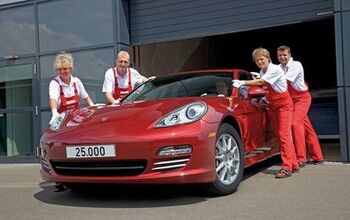
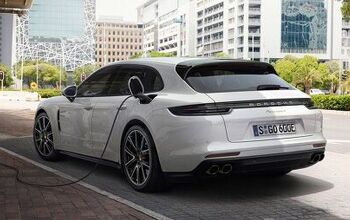

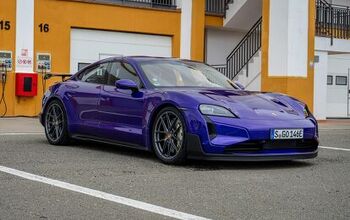

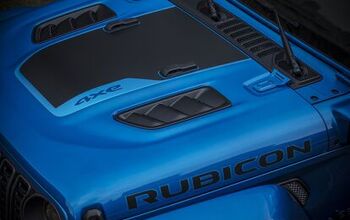
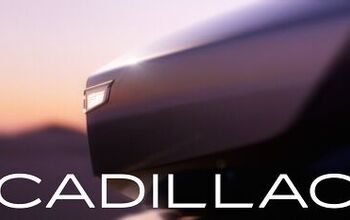

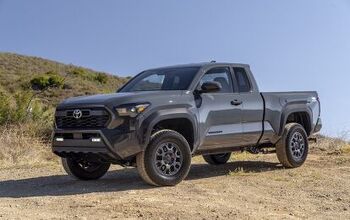


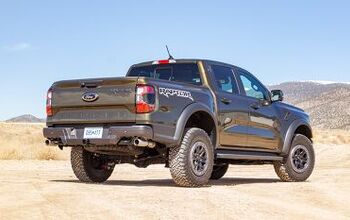

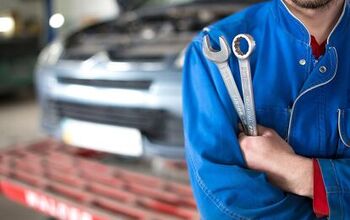
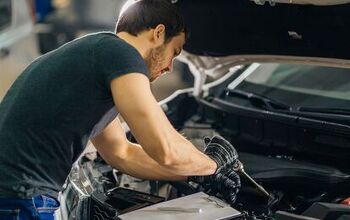

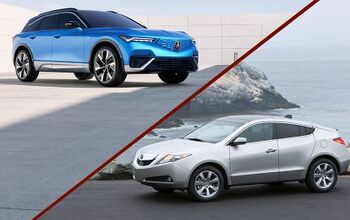
Comments
Join the conversation